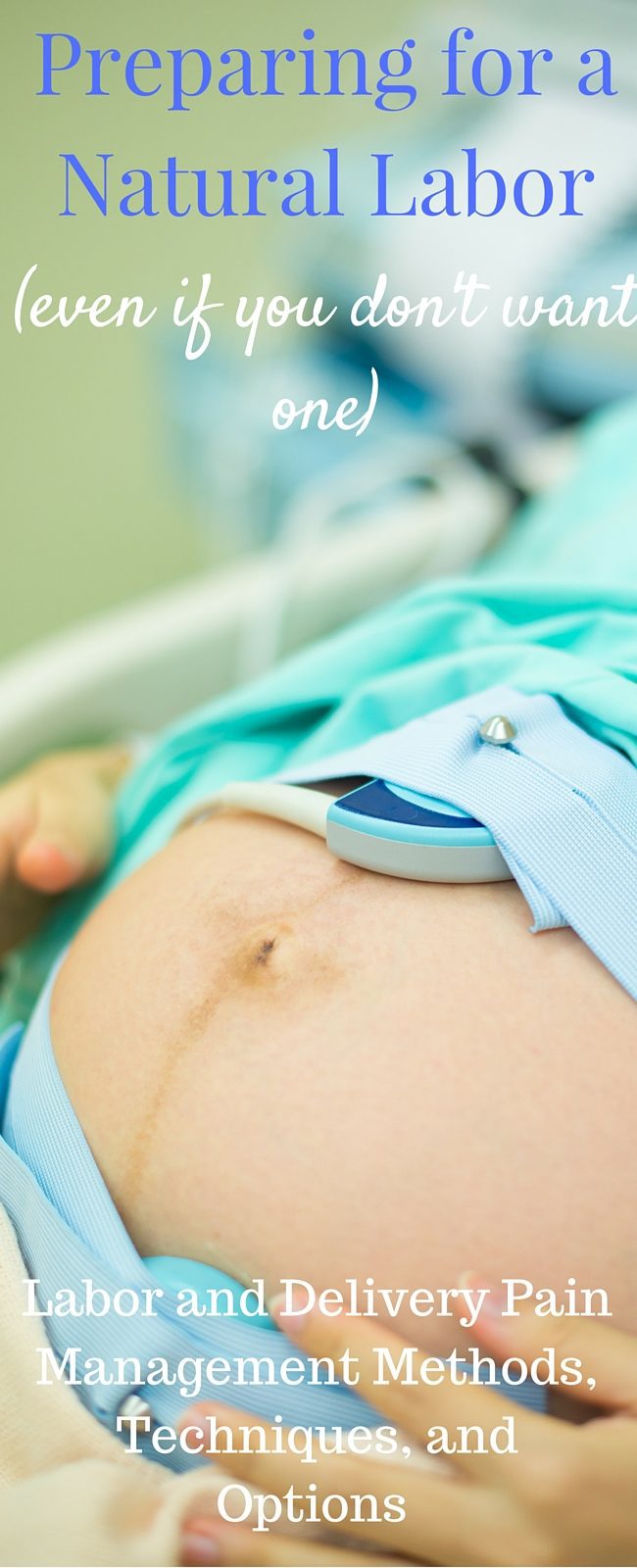It felt like someone had stabbed me in the abdomen and was twisting the knife around and around.
The hospital was about 25 minutes away, and I kept calculating in my head how many more contractions I would have to endure until we got there.
Too many. Especially as we hit every single light in the middle of rush hour traffic.
I was also cursing the nurse who decided I wasn’t in active enough labor to let me stay just a few hours earlier (and that she practically gave me a heart attack because she thought Oliver has become breech again!)
Had they waited just 30 minutes more, they probably would have kept me, and I would have had my blessed epidural.
But fate was not on my side, and I was enduring unimaginable pain.
With Jack, I got an epidural when I was dilated to a three. I was uncomfortable, but it wasn’t exactly painful. I didn’t feel anything the rest of the time, even when I was pushing.
By the time I arrived at the hospital (the second time) with Oliver, I was at 7 with a bulging bag. I was always bleeding a bunch. The doctor said there was a lot of blood, but not so much to think I was hemorrhaging. The longer I was in labor, the more concerned she seemed to be about it, but I was allowed to keep laboring. Turns out, my placenta was starting to abrupt, which can cause labor pain to be even worse.
No wonder I felt like I was dying.
As soon as the nurse pressed admit, I asked for my epidural. My doctor said that it better get there quickly because this baby was coming fast.
“You might have to have this baby without the epidural”
Panic mode set in when the nurse told me that. I realized that even though I was dead set on an epidural, I should have been prepared to give birth without one.
The nurse assured me that I was one of the most calm laboring woman she had ever seen, and that I should probably teach pain management classes.
Right.
Even though I was completely silent through the contractions, I was screaming on the inside.
While I’m certain I *could have* given birth naturally, I didn’t want to. Props to anyone who does, but I think epidurals are wonderful. I was in pain that was worse than I could have imagined. I needed relief! I’m not even being dramatic. I felt like I was dying a long, slow death. The only thing that kept me going was the promise of my perfect baby at the end (you can read more about Oliver’s birth story here).
My pain management? Breathe slowly, stay silent, and pray the contraction ended soon. It worked. But I dreaded the moment I started feeling a new one start.
Fortunately for me, my epidural did arrive and kicked in quickly, and I was feeling calm and not in pain.
However, I am determined to be a little more prepared next time.

I was so deadset on my “ideal” birth, that I forget something I always tell other people:
Childbirth never goes as planned.
So I thought I’d put together a list of pain management options during labor and delivery – hopefully, this will be helpful for those who want a natural birth, as well as those who want an epidural. Everyone should be prepared for the unexpected.
You should take a childbirth/hospital class before you have your baby. I have tons of resources for preparing for labor and delivery on Clarks Condensed. I highly recommend taking my friend, Hilary’s, prenatal class. It’s available online, has options in every budget, and you get access to Hilary, who is an amazing labor and delivery nurse. She got me through my pregnancy, and she’ll get you through yours. You can get 10% off any course using the code CLARKS at checkout.
But now, without further adieu, here are lots of different tips and techniques for managing pain during labor and delivery (and if you are wondering if you are in labor, this is a fun “am I in labor” quiz).
[thrive_leads id=’31416′]
Pain Management Options and Techniques During Labor
Medicinal
I’ll start with these, since, you know, this is my preferred method. Don’t worry, though, if you are here looking for natural pain management techniques, you will find them shortly.
Epidural: This is anesthetic that isdeliveredd through a catheter into the spine. It typically numbs the body from the waist down. When I had this with Jack, I didn’t feel a thing – even when I was pushing, I didn’t even feel pressure.
With Oliver, it really made me so much more comfortable. When I was pushing, I did feel pressure
Pain meds: Opiates are sometimes given during labor and delivery – I think some people opt for these when they need something to take the edge off, but they don’t want to have an epidural yet. They do not numb you or take away the pain, but they can make it more bearable. Because they don’t numb you, they don’t really interfere with your ability to push. Here is more information about the use of narcotics during labor and delivery. My friend, Alli, shared her most recent birth story where she used medication, which kind of freaked me out about this option! As someone who has never reacted well to strong pain medication, this isn’t something I really think I’d want.
Nitrous Oxide (aka Laughing Gas): This is something I’ve heard is more common in other countries. I don’t believe it’s even really offered in the United States. It’s definitely an interesting option though. Instead of regurgitating facts, I’ll send you over to this article to learn more.
Nature Pain Relief Methods
Here are a few “official” methods that people will often take classes for before labor and delivery.
Bradley method: This is a popular, well-known birthing method. From the website:
The Bradley Method® teaches natural childbirth and views birth as a natural process. It is our belief that most women with proper education, preparation, and the help of a loving and supportive coach can be taught to give birth naturally. The Bradley Method® is a system of natural labor techniques in which a woman and her coach play an active part. It is a simple method of increasing self-awareness, teaching a woman how to deal with the stress of labor by tuning in to her own body. The Bradley Method® encourages mothers to trust their bodies using natural breathing, relaxation, nutrition, exercise, and education.
There are 12-week courses available that you can find on the website referenced above. This is a recommended book on the Bradley method.
Hypnobirthing: When I have another child, I plan to do some hypnobirthing preparation. While I fully intend to have an epidural, this last experience has shown me that I need to be prepared. I’ve heard a lot of good things about hypnobirthing, and I think it sounds like a great option.
You can attend courses in person, but you can also buy the recordings and course online. I think I’ll probably do that option since I feel like if I were doing it in person, I would be really wanting to use it the entire time.
Lamaze: Everyone should know some good breathing techniques during labor and delivery. When I went in with Oliver (well, the second time), I was breathing super fast and loud. My nurse told me to slow down as much as I could, and it really did help.
Lamaze was developed by a French OB/GYN in the 50s, and it’s very commonly taught in childbirth classes today. Its original goal was to encourage controlled breathing, but since then, it’s expanded to their philosophy to be that “birth is normal, natural, and healthy” and that “women have a right to give birth free from routine medical interventions.” You can learn more about Lamaze here or buy the Official Lamaze guide here.
Birthing from Within: This started as a book that focuses on birth being a rite of passage – not a medical experience. It is a holistic approach to giving birth. They have courses in person, and they also have audio courses you can take.
Pain Management Techniques
Water – as soon as they sent me home, I started having crazy strong contractions. However, I didn’t want them to send me back home a second time, so I tried to deal with them as best I could. At one point, I decided to take a shower, and while I was still miserable, it made the contractions a bit more bearable.
I know a lot of people like to labor (or even give birth) in water. Many hospitals have bathtubs where you can labor. You can’t use them if you’ve had an epidural, but if you want to labor in water and give birth in a hospital, definitely find a hospital that offers this!
Moving around – Changing your position can really make a big difference. There was one point where I got in the downward dog position, and it helped for a bit. You don’t always have to be on your back – there’s plenty of people who recommend giving birth in alternative positions to your back.
In the early stages where the pain wasn’t so bad, walking seemed to help. We walked the halls of the hospital for about an hour trying to get labor to progress. It felt nice not to be confined to a bed!
Massage – Ask your spouse, mom, or whoever is in the room with you to give you a massage. This is a great post with information on massage during labor.
Rocking – Just rock back and forth. It really does help!
Music – A lot of people have labor and delivery playlists. I wish I had done this, because music is one thing that really helps me in a lot of ways. It can help to relax and move your mind away from the pain.
Focus Point – In the labor and delivery class I went to, the nurse talked about how once she walked into a room and there was a Snickers bar on the way. The lady in labor said that she put it there to focus on during the contractions and that it really helped. Ha! I thought it was funny. You don’t necessarily need a snickers point, but having a focus point can help get through the hard ones.
Visualization – There are a lot of visualization techniques you can use. The last paragraph in this article has some good tips for visualization. I liked the thought to visualize where you were in the laboring process and what the baby was doing.
Heat – I had a heating pad that I had been using to help Oliver turn from being breech, and I used it when I was at home in labor. I put it on my belly and on my back, and it did help a little bit.
Birthing ball – I’ve seen a lot of hospitals that have these available for women, or you can bring your own (or just use it at home.)
Essential oils – I’m not personally a fan of essential oils, a lot of people feel that they helped make labor easier. Recommended essential oils for labor include lavender, frankincense, peppermint, clary sage, rose, and jasmine.
Acupuncture and chiropractic – These are things you can do before you have your baby. They can help prepare your body and your baby for labor and delivery. If you go to a chiropractor, make sure they are an ICPA certified chiropractor.
[thrive_leads id=’31416′]
Other posts you may enjoy:
Surviving Labor and Delivery
Third Trimester Checklist
What They Don’t Tell You About the Week After Giving Birth
15 Things You Might Not Know about Recovering for Childbirth



Leave a Comment